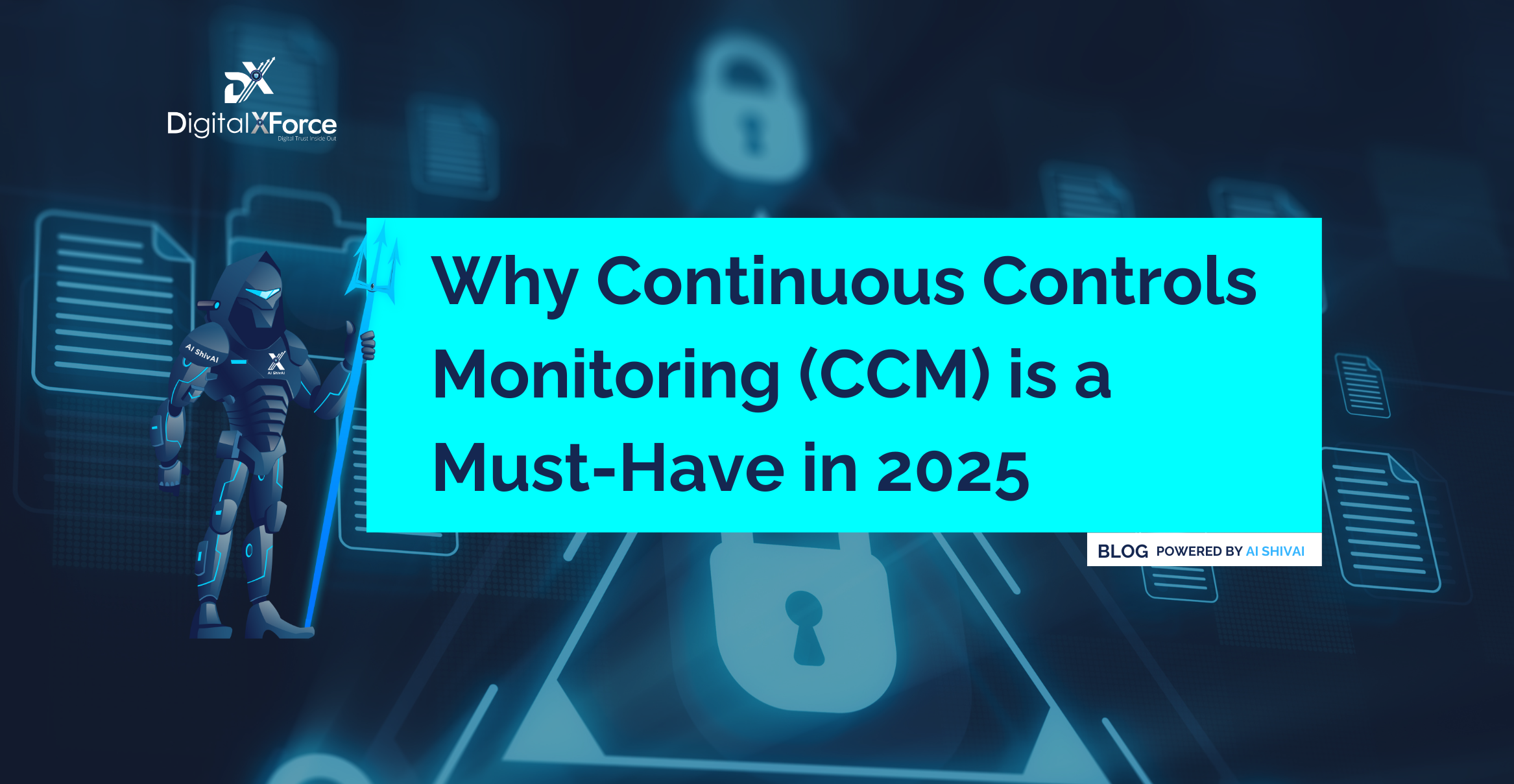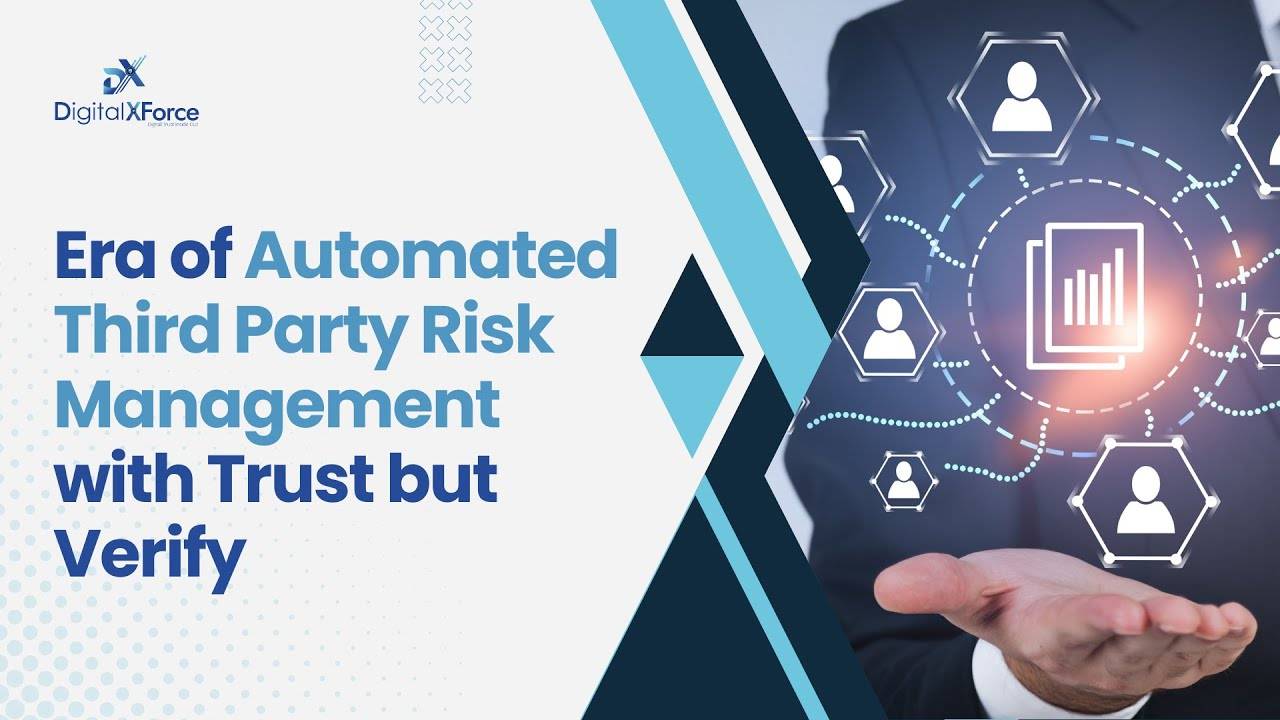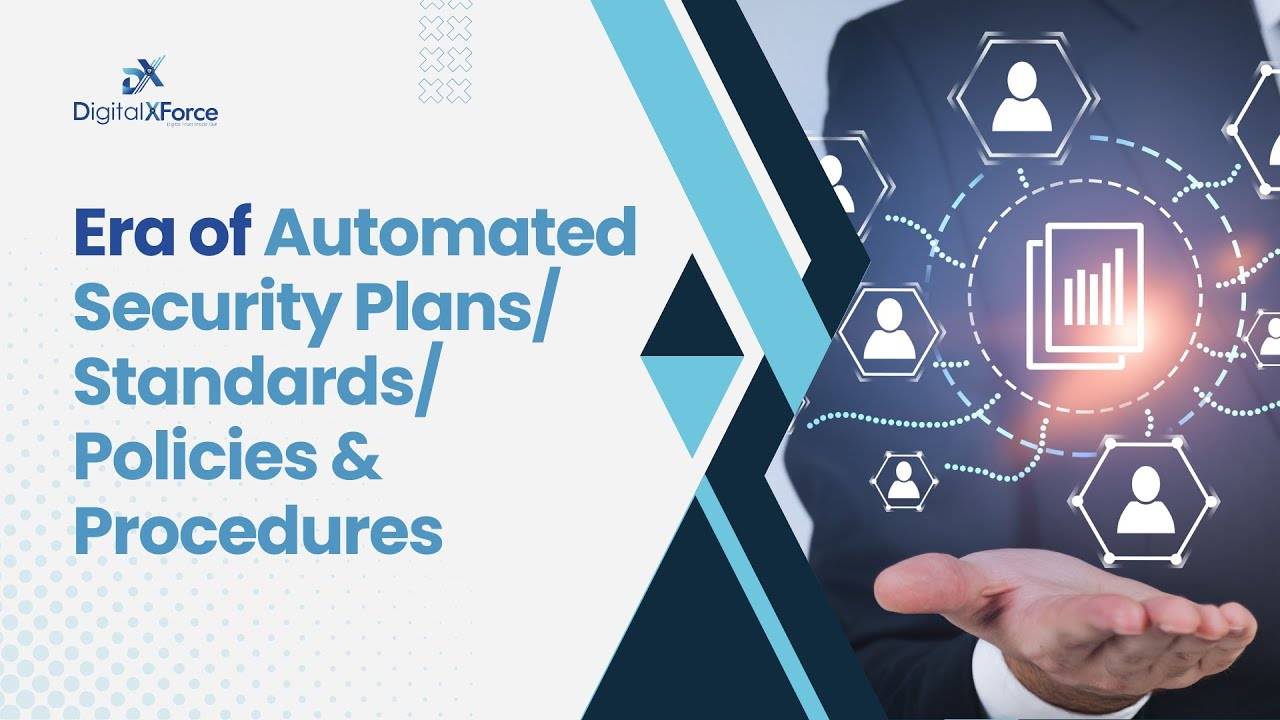
In 2025, cybersecurity is no longer just about firewalls and endpoint protection—it’s about Continuous Controls Monitoring (CCM). Boards, regulators, insurers, and customers demand real-time assurance that your enterprise is secure, compliant, and resilient.
Yet many organizations still rely on outdated security and compliance practices such as periodic audits, annual risk assessments, manual evidence gathering, and ad-hoc control reviews. In today’s volatile threat landscape and highly regulated digital economy, these static approaches are not enough. Control failures can occur in minutes. Regulatory violations can result in massive fines. And attack surfaces now span multi-cloud, SaaS, DevOps pipelines, and hybrid workforces.
In this blog, we explore why CCM is no longer a “nice-to-have” but a mission-critical capability in 2025—and how platforms like DigitalXForce are redefining the future of control assurance with real-time automation, AI-powered insights, and continuous audit readiness.
What is Continuous Controls Monitoring (CCM)?
CCM is the practice of automatically and continuously validating the effectiveness of your internal controls across security, compliance, privacy, and operations.
Unlike periodic reviews or point-in-time audits, CCM enables organizations to continuously validate controls in the context of the business systems they protect and additionally:
- Detect control failures immediately
- Validate control effectiveness 24/7
- Monitor changes in configuration, access, or behavior
- Provide real-time assurance to auditors and stakeholders
- Reduce risk dwell time and compliance violations
With CCM, organizations shift from a reactive posture to a proactive and predictive risk management strategy.
Why Periodic Control Reviews Don’t Work Anymore
Traditional control validation practices—often done quarterly or annually—worked when infrastructure was static, attack surfaces were limited, threats evolved slowly, and regulations were stable. But in 2025, none of that is true.
Let’s take a look at today’s reality:
- Cloud assets spin up and down within hours
- Employees work from anywhere, using dozens of SaaS tools
- Threat actors automate reconnaissance and lateral movement
- Regulations like DORA, CPRA, and SEC cyber rules demand near real-time disclosure and control evidence
A control that passed validation last week could already be failing today. That’s the risk gap and it’s growing.
Five Strategic Drivers for Continuous Controls Monitoring in 2025
1. Real-Time Risk Visibility Across the Enterprise
Cyber risks aren’t static—why should your controls be? CCM provides continuous telemetry on:
- Identity and access control drift
- Misconfigurations in cloud and on-prem assets
- Broken policies in endpoint and network security
- Application-level vulnerabilities
- Compliance mapping and framework coverage
With this real-time lens, risk leaders can prioritize mitigation based on live control status, track trends in control effectiveness, and spot systemic gaps before they lead to incidents. Platforms like DigitalXForce take this a step further by contextualizing control health across business-critical assets, quantifying the risk in dollar terms, and providing board-ready reporting instantly.
2. Audit-Readiness Without the Manual Pain
For most organizations, audits are a painful, time-consuming ordeal. It includes collecting outdated screenshots, exporting logs, emailing spreadsheets, and manually aligning evidence with frameworks (SOC 2, ISO 27001, NIST, PCI, etc.).
With CCM, audit evidence is always up to date and automatically analyzed and collected along with the Raw Data to suppliment the Analysis and Audit Team.
DigitalXForce, for example:
- Auto-maps controls to multiple frameworks
- Collects evidence continuously from cloud, identity, endpoint, and network tools
- Tracks remediation history and exceptions
- Generates audit-ready reports with full traceability
This means faster audits, fewer findings, lower external audit costs, and less disruption to business and security teams.
Audit-readiness becomes a byproduct of day-to-day operations—not a last-minute scramble.
3. Strengthened Regulatory and Insurance Alignment
In 2025, regulators and cyber insurers are demanding proof of ongoing control effectiveness, not just policies and checkboxes. Some regulatory drivers include:
- SEC Cybersecurity Disclosure Rules: Public companies must disclose material cyber incidents and risk management programs—CCM provides the defensible evidence.
- Digital Operational Resilience Act (DORA): Financial institutions must continuously monitor ICT controls—CCM is the backbone.
- HIPAA, PCI-DSS v4.0, CPRA: All require stronger evidence of technical safeguards and risk mitigation.
Insurance carriers are also evolving:
- Cyber policies increasingly require real-time posture data
- Premiums and payouts depend on continuous security monitoring
- Lack of CCM can lead to coverage denials or exclusions
With CCM via DigitalXForce, organizations can automatically generate attestation reports, posture snapshots, insurer-ready risk posture reports and risk quantification to satisfy regulators and insurers in minutes.
4. Improved Mean Time to Detect (MTTD) and Respond (MTTR)
Control failures are often the precursor to breaches.
For example a firewall rule is modified, admin user is granted excessive access, encryption control is disabled, logging service stops reporting. Without CCM, these changes might go unnoticed for weeks.
With CCM:
- Detection is instant
- Alerts are contextualized by risk impact
- Automated workflows route tasks to the right owners
- Control gaps are remediated before they’re exploited
DigitalXForce integrates with SIEMs, Jira, ServiceNow, and other ticketing systems, and threat intelligence platforms, so alerts automatically become tracked remediation tasks with owners and SLA deadlines.
5. Demonstrated ROI of Cybersecurity Investments
CISOs are under pressure to justify their budgets and show measurable impact. CCM enables:
- Continuous measurement of control health improvements
- Quantification of risk reduction over time
- Attribution of security spend to posture gains
- Risk-adjusted ROI calculations for tools, teams, and initiatives
With DigitalXForce, every control improvement is tied to a business asset, risk dollar reduction, and framework requirement. This empowers CISOs to tell powerful stories to the board: “By implementing CCM, we reduced our quantified cyber risk by $3.2M and improved audit readiness by 28% across four frameworks.”
How DigitalXForce Delivers Next-Gen Continuous Control Monitoring
DigitalXForce (DigitalXForce) is redefining CCM through:
- Real-Time AI-Powered Control Monitoring
- Automated Evidence Collection
- Business-Aligned Risk Context
- Multi-Framework Control Mapping
- KPI/KRI Dashboards for Execs and Auditors
- Cyber Risk Quantification (CRQ)
Key DigitalXForce Continuous Control Monitoring Features:
| Feature | Description |
| Control Drift Detection | Detects deviations from golden configurations or policies |
| Continuous Evidence Automation | Pulls logs, metrics, and artifacts directly from systems |
| Framework Auto-Mapping | Aligns technical controls to ISO, NIST, SOC 2, HIPAA, etc. |
| Risk Impact Quantification | Converts control failures into $ risk exposure |
| Smart Workflows | Route issues for remediation with ownership and SLAs |
| Executive Dashboards | Tracks posture over time and compares it to risk appetite |
Why 2025 Is the Tipping Point for Continuous Controls Monitoring
The convergence of threat velocity, regulatory scrutiny, cloud complexity, and AI-driven adversaries has made continuous control assurance a necessity. CCM is no longer just about security—it’s about business continuity, trust with stakeholders, regulatory resilience, strategic risk reduction, operational excellence.
Organizations that adopt CCM are more agile, better protected, always audit-ready, financially aligned, trusted by customers and regulators.
Those that don’t? They risk flying blind into their next breach—or their next failed audit.
Ready to Make Continuous Controls Monitoring a Reality?
DigitalXForce makes CCM simple, scalable, and powerful. Whether you’re a CISO, risk manager, compliance lead, or auditor, DigitalXForce gives you real-time assurance, smart automation, meaningful context, defensible reporting, and faster & safer outcomes.
Book a Demo Today
Let us show you how to transform control chaos into continuous confidence.
About DigitalXForce
DigitalXForce is the industry-leading Enterprise Security Risk and Posture Management platform. Powered by ShivAI and XForce GPT, DigitalXForce provides real-time CCM, cyber risk quantification, compliance automation, and board-ready insights—enabling modern enterprises to continuously reduce risk, improve trust, and stay audit-ready 24/7.



